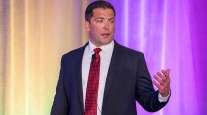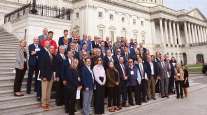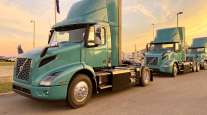Senior Reporter
ATA Leaders See Shared Emissions Challenges With EU
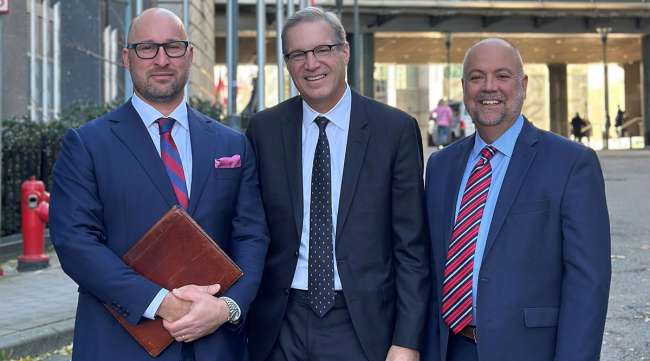
[Stay on top of transportation news: Get TTNews in your inbox.]
American Trucking Associations CEO Chris Spear said European transportation leaders are facing regulatory challenges similar to those confronting U.S. fleets, as a raft of emissions regulations set to take effect globally in the years ahead have timelines that he views as unrealistic.
“What we witnessed on this trip is what we are going to be seeing happen in the coming months and years in California,” Spear said after he and an ATA contingent held meetings late last month in Brussels with members of the European Union Parliament and European Commission. “I think the European Union is quickly realizing that this is too much, too fast. It is not and never will be a question about anyone’s commitment to a clean environment. It’s just setting achievable timelines and targets that allow us to reduce emissions in a reasonable way that is not impeding economic growth, adversely impacting the supply chain and bringing harm to our job base. These targets are simply not achievable. They will fail.”
Spear has been critical of California’s Advanced Clean Trucks rule, which starting on Jan. 1 will require the production and sale of zero-emission equipment in the state. Come 2030, the state’s Advanced Clean Fleets rule kicks in, mandating the purchase of that equipment, applying to all trucks operating in California and any state that adopts California Air Resources Board policy.
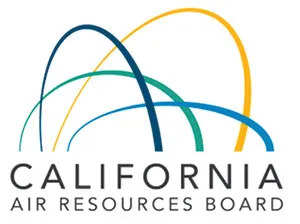
Across the pond, EU officials in late March adopted the so-called European Green Deal, a long-term strategy aimed at making Europe carbon neutral by 2050. The initiative sets a 2035 deadline for new cars to be CO2 free. By 2030, emissions from cars must be 55% lower compared with 2021 levels.
Regarding trucks and buses, in October the European Council reached an agreement on rules aimed at strengthening emissions standards for new heavy-duty vehicles, including a requirement for a 90% emissions reduction by 2040 compared to 2019 levels. The European Commission and the European Council are part of the EU.
Spear was joined on the trip by ATA Chairman Andrew Boyle, who said the EU approach to achieving longer-term goals for zero-emission transportation offers more flexibility than strategies being advanced stateside.
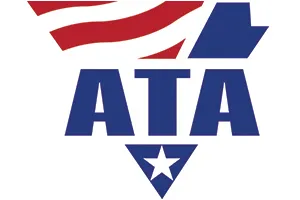
“The EU is now taking a technology-neutral approach, while the U.S. and California, and certain members of the administration are being much more prescriptive when it comes to technology,” Boyle said. “The member states shared our concerns, and there is a change towards more pragmatism.”
The move towards a global low- or zero-emission transportation industry comes at a time when both U.S. and European governments expect freight activity on highways to rise in the years ahead.
RELATED: 60-Year-Old Daimler Plant Is Ready for the Future
“This means a lot more trucks on the road, and the European Commission staff had many of the same concerns we had,” said ATA Chief Economist Bob Costello, who also took the trip to Brussels. “It’s a much more complicated picture. We need to go well beyond tailpipe emissions.”
VTNA President Peter Voorhoeve outlines how the truck maker is helping its customers make better use of telematics and remote diagnostics tools to run their fleets more effectively. Tune in above or by going to RoadSigns.ttnews.com.
The ATA leaders also met in Geneva with leaders from the International Road Transport Union and the International Labor Organization. The union was formed in 1949 to advance the interests of bus, coach, taxi and truck operators and ensure economic growth and prosperity. The ILO has been in existence since 1919. During its meeting with this group, ATA officials discussed global labor and workforce issues.
The increased focus on global regulations comes at a time when truck makers and component manufacturers are spending billions of dollars on research to improve the range of battery-electric trucks, develop alternative-fuel engines, and build a global network of charging and refueling stations to accommodate the new fuels. Despite his concerns about timelines, Spear said he believes the industry is gearing up to meet the challenge of zero-emission vehicles.
“The development is there. The ability to have a viable alternative-energy driven power unit is definitely possible, whether it be electric, hydrogen, natural gas — they proved it that the technology is there,” he said. “But the cost to administer it and service it [is] a really high bar for some of these technologies in the short run. They have proven they can move freight with alternative energy sources, but there are challenges to mass produce it — from the infrastructure, the fueling sources for hydrogen and the sourcing of the minerals, to price and operational parity. It takes time for these issues to settle in.”
Want more news? Listen to today's daily briefing below or go here for more info:



